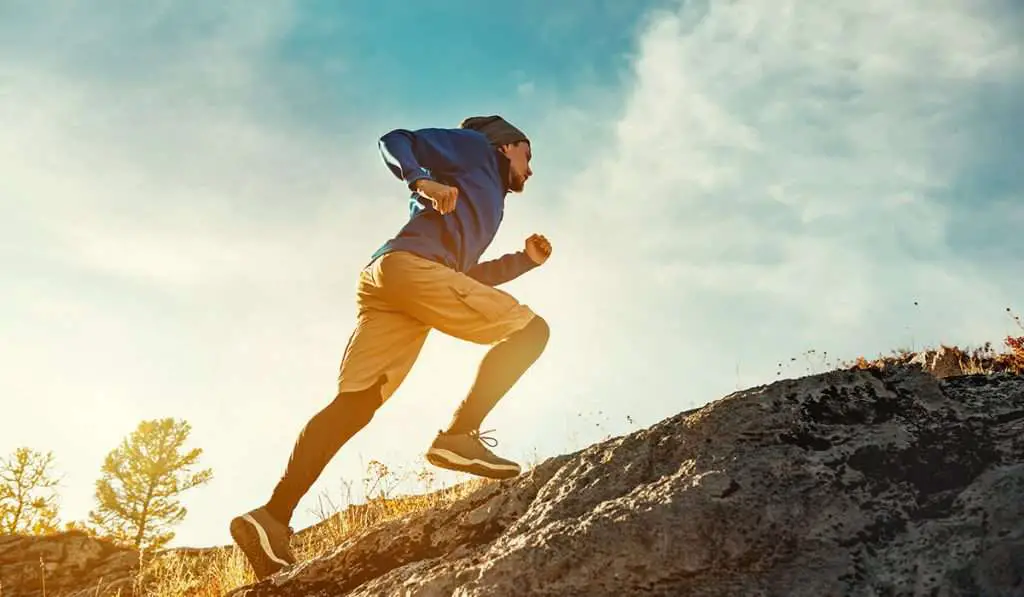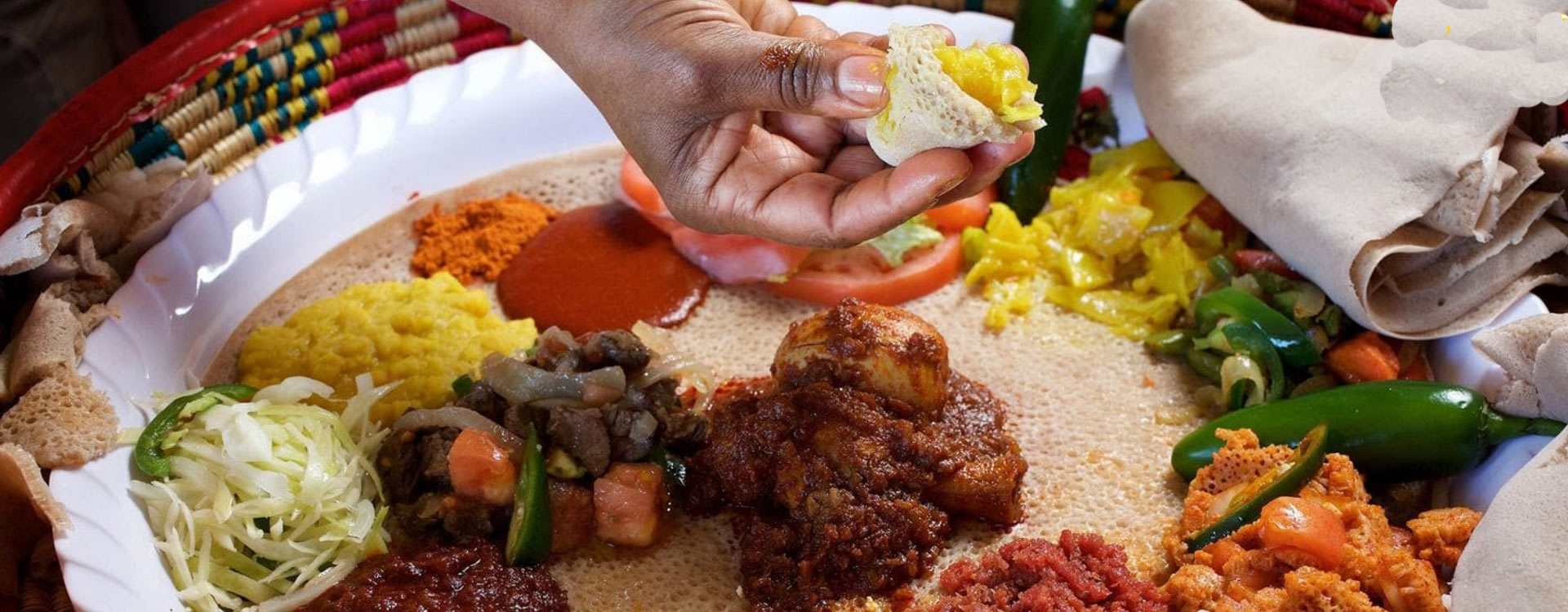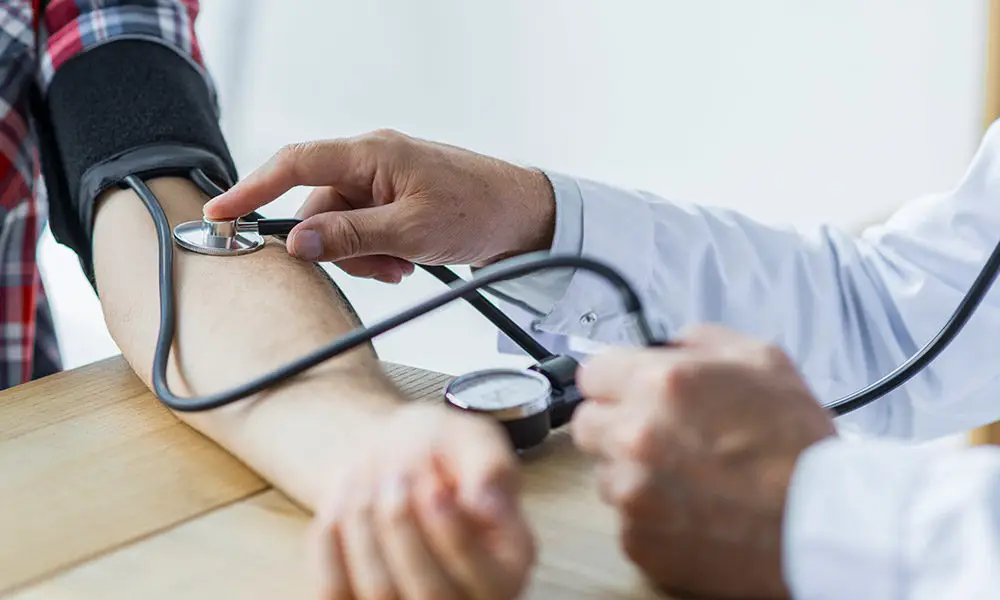Dreaming of climbing Kilimanjaro? This beginner-friendly guide breaks down exactly how to prepare, from a realistic 3-6 month training plan to must-pack gear essentials. Learn how to build endurance through cardio and strength workouts, practice proper hiking techniques, and mentally prepare for summit night. Plus, discover the 7 critical items you'll need in your backpack to handle the mountain's unpredictable conditions. Everything first-time climbers need to know to reach Africa's rooftop successfully.
Table of Contents
- Why Training for Kilimanjaro Matters
- 3-6 Month Kilimanjaro Training Timeline
- Endurance Training
- Practice Hikes
- Flexibility & Recovery
- Mental Toughness:
- Altitude Preparation
- Nutrition for Energy and Recovery
- Train with Your Gear
- Common Training Mistakes to Avoid
- Measuring Training Success
- Measuring Training Success
- When to Adjust Your Plan
- Medications and First Aid Kit
Climbing Kilimanjaro is easier than you think if you know these secrets
Mount Kilimanjaro, Africa’s highest peak at 19,341 feet (5,895 meters), is a trekker’s dream. But don’t be fooled by its non-technical routes—Kilimanjaro is a demanding physical and mental challenge. Preparing well is your best shot at a safe, successful, and don't forget to choose the Best Route to Climb Kilimanjaro for a memorable summit.
This expert-designed Kilimanjaro climbing training plan will help you build endurance, strength, altitude readiness, and mental stamina. Whether you’re six months out or just beginning to prepare, this guide will walk you through every step.
Why Training for Kilimanjaro Matters
Mount Kilimanjaro stands very tall, It makes it a serious undertaking even for experienced hikers. While it's technically a non-technical climb, the combination of altitude, distance, and consecutive days of hiking creates unique challenges:

The Reality of the Climb
- High Altitude: You’ll be ascending to nearly 20,000 feet. Symptoms of altitude sickness can start as low as 8,000 feet.
- Extended Effort: Most climbs last 5–9 days, requiring back-to-back trekking.
- Varied Terrain: Expect rainforest, alpine desert, and freezing summit nights.
- Daypack Weight: You’ll carry 15–20 lbs daily.
- Summit Push: Begins around midnight, with 6–8 hours to Uhuru Peak.
3-6 Month Kilimanjaro Training Timeline
Train for Kilimanjaro over 3–6 months with a structured plan combining cardio, strength, hiking, and recovery. Focus on consistency, gradual progression, and simulating trek conditions. Prioritize endurance, core stability, and mental resilience. Include gear testing, proper nutrition, and rest. With dedication, this comprehensive approach prepares you physically and mentally for a successful summit.
Training Timeline
| Timeframe | Focus Areas | Activities |
|---|---|---|
| 3–6 Months | Aerobic Training | Hiking, jogging, cycling, swimming |
| 3–6 Months | Strength Training | Squats, lunges, step-ups, deadlifts, planks |
| 3–6 Months | Practice Hikes | Local hikes with elevation gain |
| 3–6 Months | Flexibility & Mobility | Daily stretching, yoga |
| 3–6 Months | Mental Training | Mindfulness, breathing exercises |
| Weeks Before | Nutrition | Carbohydrate loading, hydration, altitude adaptation foods |
| Weeks Before | Gear Preparation | Break in boots, test gear during hikes |
| Ongoing | Mental Preparation | Simulate summit night, understand altitude sickness |
Endurance Training
Cardio is critical. Prioritize low-impact, steady-state training:
- Preferred: Hiking with elevation
- Supportive: Brisk walking, jogging, cycling, stair climbing
- Recovery: Swimming
Schedule: 3–4 sessions/week Intensity: Moderate; increase weekly hike duration
Pro Tip: Train in your hiking boots with a weighted pack.
Strength Training
Focus on functional strength:
Legs:
- Step-ups
- Walking lunges
- Squats
- Calf raises
Core:
- Planks (front and side)
- Dead bugs
- Glute bridges
Shoulders & Back:
- Rows
- Dumbbell presses
- Trekking pole simulations
Routine: 2x/week, 45 minutes/session
Practice Hikes: Your Most Important Prep
Simulated hikes help condition your body, test gear, and boost confidence. Start with local trails and work up to 6–8 hour treks with pack.

Tips:
- Mimic summit day: cold starts, early mornings
- Practice with your summit pack weight
- Focus on elevation gain, not just distance
Kilimanjaro Weekly Training Schedule (For Beginners & Moderately Active Individuals)
| Day | Activity Type | Details |
|---|---|---|
| 1 | Endurance Training | - 5-min brisk walk (warm-up) - 25-min light jog - 5-min walk (cool-down) - 30-second elbow plank |
| 2 | Strength Conditioning | - 10-min brisk walk (warm-up) - 3 sets x 30 secs each: squats, forward lunges, calf raises, side lunges, hanging from bar, push-ups - Stretching |
| 3 | Recovery or Flexibility | - Rest or 60 minutes of yoga focusing on lower back and hamstring flexibility |
| 4 | Interval/Cardio Boost | - 5-min warm-up walk - 20-min jog - 5 x 30-sec sprints, 1-min walk/jog between sprints - 5-min cool-down walk |
| 5 | Stair and Core Strength | - 30-min stair walking or Stepper - 3 sets x 30 secs each: push-ups, pull-ups or inverted rows, plank, superman hold |
| 6 | Rest Day | - Full rest day to aid muscle recovery |
| 7 | Endurance Maintenance | - 40-min light jog (walking as needed) - 30-second plank |
Weekly Training Plan for Active Lifestyles
| Day | Activity Type | Details |
|---|---|---|
| 1 | Cardio Training | - 5-min warm-up walk - 40-min light jog - 5-min cool-down walk - 3 sets of 30-sec planks |
| 2 | Leg + Core Strength | - 10-min warm-up walk - 3 sets x 45-60 secs each: squats, sumo squats, lunges, side lunges, calf raises, bar hangs, push-ups - Stretching |
| 3 | Hiking Simulation | - 60-min treadmill walk with incline or hill jogging Alternative: 40-min beach jog for resistance training |
| 4 | Recovery or Active Rest | - Gentle 60-min yoga, walk, or swimming session |
| 5 | Interval Training | - 5-min jog (warm-up) - 10 sets: 1-min fast run + 2-min light jog/walk - End with stretching |
| 6 | Cardiovascular Conditioning | - 45-min steady jog |
| 7 | Rest Day | - No physical exertion; allow body to reset |
Long-Term Planning Tip
| Timeline | Focus Area |
|---|---|
| 5–6 Months Before Trek | Begin with lower intensity; increase duration progressively. Include elevation hikes and long aerobic sessions |
| 2–3 Months Before | Start integrating full training cycles weekly. Emphasize back-to-back hiking days and practice gear use |
| Final Week Before Trip | Reduce intensity; prioritize recovery. Short walks, hydration, and sleep optimization are key |
Flexibility & Recovery
Stretching and mobility work reduce soreness and injury risk.
- Daily: 10–15 min stretching
- 2x/week: Yoga or guided mobility
- Use: Foam roller, massage ball
Mental Toughness: Climb with Confidence
Mental preparation helps when the going gets tough.
- Visualize success: Picture reaching the summit
- Cold exposure: Acclimate via cold showers
- Mindfulness: Breathing exercises and meditation
- Positive self-talk: Reframe discomfort as progress
Altitude Preparation: Train Your Lungs
While sea-level training can’t mimic the summit altitude, it can help.
- Breathing drills: 4-7-8, box breathing
- Interval training: Push heart rate, then recover with breath holds
- Weekend hikes: Visit higher elevations if possible
- Sleep high: If accessible, sleep above 6,000 ft (1.83 km)
Nutrition for Energy and Recovery
Train your nutrition like your body.

Pre-Trek
- Carbs: Whole grains, fruits, sweet potatoes
- Protein: Eggs, legumes, lean meats
- Iron: Red meat, leafy greens, lentils
- Hydration: 3–4 litres/day
During Trek
- Frequent snacks: Every 90 minutes
- Meals: Calorie-dense, easy-to-digest
- Hydration: Carry electrolytes (LMNT, Nuun)
Train with Your Gear
Avoid surprises on the trail. Train in:

- Boots: Fully broken-in, waterproof
- Backpack: 20–30L, load with 15–20 lbs
- Poles: Practice use on descents
- Clothing: Test layers for comfort and moisture control
- Water system: Hydration bladder or bottles
Tip: Keep essential gear in carry-on for your flight.
Common Training Mistakes to Avoid
- Too much too soon - gradually build training load
- Ignoring recovery - rest days are when adaptation occurs
- Wrong gear training - always train in your actual hiking boots
- Altitude overconfidence - even fit people can struggle with altitude
- Neglecting downhill training - practice controlled descents with poles
- Skipping pack training - always train with weight you'll carry
Measuring Training Success
Track these key indicators throughout your program:
- Resting heart rate should decrease over time
- Hiking pace should improve while feeling easier
- Recovery time between sessions should decrease
- Pack weight tolerance should increase comfortably
- Sleep quality should remain consistent despite training load
When to Adjust Your Plan
Be flexible and responsive to your body:
- Persistent fatigue may indicate overtraining
- Recurring injuries require addressing underlying issues
- Plateaued progress might need training variation
- Time constraints may require prioritizing most important elements
Medications and First Aid Kit
- Include ibuprofen, altitude sickness medication (Diamox if prescribed), blister plasters, and basic wound care supplies.

👉 Bonus Tip: Always pack your essentials (boots, jacket, medications) in your carry-on bag when flying to Tanzania. Lost luggage could wreck your trip. Also remember Climbing Kilimanjaro Without a Guide is not allowed (Here’s Why It’s Not Allowed) so make sure you plan earlier who will be your guide.
The Bottom Line
Climbing Kilimanjaro successfully requires consistent, progressive training over several months. This 16-week plan provides a structured approach to building the cardiovascular endurance, muscular strength, and mental resilience needed for Africa's highest peak.
Remember that every climber is different. Use this plan as a framework, but listen to your body and adjust as needed. The goal isn't to become an elite athlete – it's to be prepared enough that you can focus on enjoying one of the world's most incredible adventures.
Your training journey is part of the Kilimanjaro experience. Embrace the process, stay consistent, and trust that every step up your local hills is preparing you for that final push to Uhuru Peak.
Ready to start your Kilimanjaro training journey? Download our free training PDF and begin building toward your summit success today.
Climb Kilimanjaro Training FAQs
How much training do you need to do to climb Kilimanjaro?
To climb Kilimanjaro, you need 3–6 months of consistent training. Focus on cardio, hiking with elevation, and strength workouts. Your body needs time to build endurance and adjust to long trekking days. Gradual progression and proper recovery are key to avoiding injury and summit fatigue.
What level of fitness is needed to climb Kilimanjaro?
To climb Kilimanjaro, you need a good base level of fitness. You do not need to be an athlete, but you should comfortably handle long hikes, uneven terrain, and carry a backpack. Cardio stamina, leg strength, and mental resilience are essential to reach the summit safely.
Can a beginner climb Kilimanjaro?
Yes, a beginner can climb Kilimanjaro with proper training and preparation. Most successful climbers are not professional hikers. Training for 3–6 months with hikes, cardio, and strength workouts can equip a beginner to handle altitude and physical demands of the Kilimanjaro trek.
How do you prepare for climbing Kilimanjaro?
Prepare for climbing Kilimanjaro with a balanced training plan including hiking, cardio, and strength workouts. Hike weekly with a loaded backpack, increase elevation gain, and break in your boots. Add breathing exercises and practice using your gear to ensure summit readiness.
Do you need oxygen to climb Kilimanjaro?
No, you do not need bottled oxygen to climb Kilimanjaro. The climb is non-technical, and acclimatization is managed by ascending slowly. However, some companies carry emergency oxygen for safety. Most climbers reach the summit without supplemental oxygen if properly acclimatized.
What is the best age to climb Kilimanjaro?
The best age to climb Kilimanjaro is between 16 and 60, but anyone in good health and fitness can succeed. Both teenagers and seniors have reached the summit. What matters most is physical preparation, mental toughness, and managing altitude during the trek.
Who should not climb Kilimanjaro?
People with uncontrolled heart conditions, severe respiratory issues, or unaddressed medical problems should not climb Kilimanjaro. Always consult your doctor before attempting the climb. Mental health, fitness, and the ability to cope with altitude also determine whether it’s safe for you.
How hard is it to breathe on Kilimanjaro?
It gets harder to breathe on Kilimanjaro as you ascend. Oxygen levels drop to about 50% at the summit. This can cause shortness of breath and fatigue. Proper acclimatization, slow pace, and deep breathing techniques help your body adjust to the altitude.
Can you climb Kilimanjaro without training?
Climbing Kilimanjaro without training is risky. The physical and mental demands, combined with altitude, can overwhelm unprepared climbers. At least 3 months of hiking, strength, and cardio workouts are recommended. Training increases your success rate and reduces the chance of altitude sickness.
How many people fail to climb Kilimanjaro?
About 30% of climbers fail to reach Kilimanjaro summit. The most common reasons are altitude sickness and lack of preparation. Choosing a longer route, training well, and ascending slowly can significantly increase your chances of successfully summiting Mount Kilimanjaro.
Who is the youngest person to climb Mount Kilimanjaro?
The youngest person to climb Mount Kilimanjaro is reportedly 6-year-old Coaltan Tanner from the USA. However, the legal minimum age for climbing Kilimanjaro is 10, set by Tanzanian authorities. Exceptions require special permits, and all young climbers must be closely supervised.
Can a normal person climb Kilimanjaro?
Yes, a normal person can climb Kilimanjaro. You do not need elite athletic ability, just good fitness, mental determination, and proper preparation. Thousands of everyday people reach the summit every year with guided support and consistent training leading up to the climb.
What is the hardest part of climbing Kilimanjaro?
The hardest part of climbing Kilimanjaro is summit night. It begins around midnight in freezing temperatures and takes 6–8 hours of steep uphill trekking at high altitude. This physically and mentally intense challenge tests every climber, especially when oxygen levels are low.
What is the best training for Kilimanjaro?
The best training for Kilimanjaro includes hiking on varied terrain, cardio workouts like stair climbing or running, and strength training for legs and core. Add altitude simulation or breathing exercises if possible. Train consistently for several months for the best results.
How many hours a day to climb Kilimanjaro?
You’ll hike 4–7 hours daily on most Kilimanjaro days. On summit day, expect a 12–16-hour trek. The pace is slow to allow for altitude acclimatization. Training with long hikes and back-to-back days on the trail can prepare your body for this.
How do you sleep on Kilimanjaro?
You sleep in tents or huts on Kilimanjaro, depending on the route. Bring a warm sleeping bag rated to -10°C (14°F). Nights can be cold, and high altitude may affect your sleep. Training your body to rest after long hikes is helpful.
Do you need a pee bottle for Kilimanjaro?
Yes, a pee bottle is recommended for Kilimanjaro, especially on summit night. Getting out of the tent in freezing temperatures can be difficult. A wide-mouth bottle allows you to stay warm and safe while managing basic needs during your climb.
What happens to your body when you climb Kilimanjaro?
Climbing Kilimanjaro challenges your body with altitude, cold, and physical effort. You may experience fatigue, headaches, or nausea due to reduced oxygen. Proper acclimatization, hydration, and nutrition help your body adapt. Some muscle soreness and sleep disturbances are also common.
When not to climb Kilimanjaro?
Avoid climbing Kilimanjaro during the long rainy season (March to May) and the short rainy season (November). Trails can be slippery, and visibility is poor. The best times are January to early March and June to October for clear skies and better trail conditions.
How much money do you need to climb Mount Kilimanjaro?
Climbing Mount Kilimanjaro costs between $1,800 and $4,000 depending on the route, operator, and services. Cheaper options often sacrifice safety and support. Budget for tips, gear, travel insurance, and flights. Always choose a reputable, licensed Kilimanjaro tour company.
Who is the oldest man to climb Kilimanjaro?
The oldest man to climb Kilimanjaro is Robert Wheeler from the USA, who summited at age 85. This achievement shows that age is not a barrier if you’re fit and well-prepared. Senior climbers should consult their doctor and train carefully before attempting.
How much experience does it take to climb Kilimanjaro?
You don’t need technical climbing experience to climb Kilimanjaro, but previous hiking experience is helpful. Multi-day hikes, high-altitude treks, or back-to-back long walks prepare you for the mountain. Focus on endurance and acclimatization rather than technical skills.
Can an average person climb Kilimanjaro?
Yes, an average person can climb Kilimanjaro. It’s a non-technical trek accessible to those with good fitness and mental determination. With proper training, guidance, and a slow pace, most healthy adults can reach the summit and enjoy the challenge.
When should I start training for Kilimanjaro?
Start training for Kilimanjaro at least 12–16 weeks before your climb. Begin with cardio and walking, then build up to longer hikes with elevation. Include strength training and rest days. Early preparation helps prevent injuries and improves altitude tolerance.
Is Kilimanjaro harder than Everest?
Kilimanjaro is not harder than Everest, but it’s still challenging. Everest Base Camp is a longer trek with gradual acclimatization, while Kilimanjaro has a faster ascent. Summit night on Kilimanjaro is physically demanding due to cold, darkness, and low oxygen levels.
How many climbers died in Kilimanjaro?
About 10 climbers die on Kilimanjaro annually, mostly from altitude-related complications. While it’s not a technical mountain, the risks are real. Choose a reputable operator, train properly, and don’t ignore symptoms of altitude sickness to minimize danger during your climb.


